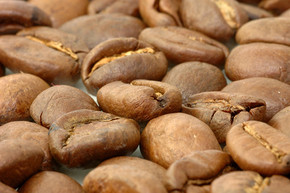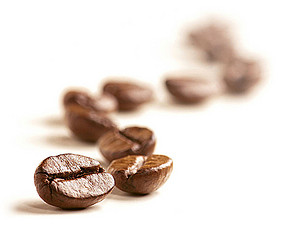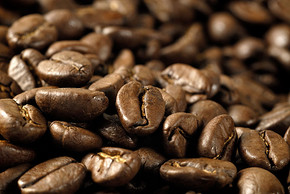The market of Peruvian coffee, a brief introduction to Peruvian coffee
Follow the caf é (Wechat official account vdailycom) and found that Beautiful Cafe opened a small shop of its own.
As a rising star in the coffee industry, Peruvian coffee is gradually opening up its popularity and entering the international market. Peruvian coffee has always been used as one of the stable and mellow mixed beans of comprehensive coffee. Peruvian coffee has a mellow taste and the right acidity, and this lukewarm coffee attitude has made more and more people like it.

Peru is located in western South America, with a coastline of 2254 kilometers. The Andes runs from north to south, and the mountains account for 1% of the country's area. it belongs to the tropical desert region with a dry and mild climate. Peruvian coffee is mostly grown at the foot of the Andes, where it is rich in traditional Central American top coffee beans. Peru has rich natural landscapes including tropical rain forests, unique hills and mountains and the driest deserts. Coffee is grown along the eastern side of the Andes at a height of 1300 to 1850 meters. Excellent Peruvian coffee grows at high altitudes in the Andes, reaching a maximum of 2000 meters.
Up to 98% of Peruvian coffee is grown in forest areas, and most of the producers are small farmers:
Peru's finest coffee is produced in Chanchmayo, Cuzco, Norte and Puno. It is most famous for the coffee beans produced in Chaximayo in the middle and Cusco in the south. Most Peruvian coffee is grown under natural conditions and produces characteristic organic coffee. Organic coffee is made of beans grown in the shade of trees. Coffee grown under natural conditions costs 10% more than others. Judging from poverty, farmers may not have the money to buy chemical fertilizers and pesticides, but it is really difficult to confirm all the coffee. Although the yield of coffee beans is not high because of the method of planting in the shade, its quality can reach the level of gourmet coffee. This is because shading trees can slow down the ripening of coffee trees, help coffee grow fully, make it contain more natural ingredients, breed better flavors, and reduce caffeine content.
Peruvian coffee market:
Peru has good economic conditions and a stable political situation, thus ensuring the good quality of coffee. In the mid-1970s, Peruvian coffee production was about 900000 bags a year, and then steadily increased to about 1.3 million bags a year. Although private exporters buy coffee in remote areas through middlemen, the main market is still monopolized by the government. Later, the private Peruvian Coffee exporters Association was established, which is committed to improving the quality of coffee, and its primary task is to set standards and eliminate inferior products, so as to create an atmosphere of quality supremacy. This positive move heralds a bright future for the coffee industry. Since then, rising prices have encouraged farmers to actively grow coffee rather than cocoa, the region's traditional cash crop.
In general, these coffee beans have the gloss of Central America, but they are all packaged in South American flavor. High-quality organic venues do have more rural coffee characteristics. As long as these coffee beans continue to add interesting flavors rather than weaken them. Such a cup of Peruvian coffee has all the bright and deep tastes. When a cup of ordinary Peruvian coffee is in your hand, you don't have to try to taste whether it is good or not.
Peruvian coffee is grown in a planned way, which has greatly increased coffee production. Its rich acidity and mellow smoothness are its most prominent features. Peruvian coffee has a soft sour taste, medium texture, good taste and aroma, and is an indispensable ingredient in the production of comprehensive coffee. High-quality Peruvian coffee, with strong aroma, smooth, layered, rich sweet, elegant and mild sour taste, will quietly awaken your taste buds.
Important Notice :
前街咖啡 FrontStreet Coffee has moved to new addredd:
FrontStreet Coffee Address: 315,Donghua East Road,GuangZhou
Tel:020 38364473
- Prev

The origin of Kopi Luwak. How does Kopi Luwak taste?
Follow Kaibei (Wechat official account vdailycom) found that Beautiful Cafe opened a small shop of its own. Kopi Luwak was extracted from the feces of civets and processed. After the civet eats the coffee fruit, the coffee beans are fermented in the cat's stomach and excreted along with the feces, so it is called Kopi Luwak, because the wild civet will choose the most ripe and sweetest fruit to eat, and in the body.
- Next

Brief introduction of San Ignacio Coffee Bean in San Ignacio, Peru
Following Cafe Review (official Wechat account vdailycom) found that the Beautiful Cafe opened its own shop in San Ignacio San Ignacio, Peru. According to Gardelli, this is the best Peruvian he has ever tasted. Rony Gurrero founded Lima Coffee Coffee in Jaen in 2016. Ronnie was the largest coffee in Peru.
Related
- Detailed explanation of Jadeite planting Land in Panamanian Jadeite Manor introduction to the grading system of Jadeite competitive bidding, Red bid, Green bid and Rose Summer
- Story of Coffee planting in Brenka region of Costa Rica Stonehenge Manor anaerobic heavy honey treatment of flavor mouth
- What's on the barrel of Blue Mountain Coffee beans?
- Can American coffee also pull flowers? How to use hot American style to pull out a good-looking pattern?
- Can you make a cold extract with coffee beans? What is the right proportion for cold-extracted coffee formula?
- Indonesian PWN Gold Mandrine Coffee Origin Features Flavor How to Chong? Mandolin coffee is American.
- A brief introduction to the flavor characteristics of Brazilian yellow bourbon coffee beans
- What is the effect of different water quality on the flavor of cold-extracted coffee? What kind of water is best for brewing coffee?
- Why do you think of Rose Summer whenever you mention Panamanian coffee?
- Introduction to the characteristics of authentic blue mountain coffee bean producing areas? What is the CIB Coffee Authority in Jamaica?

